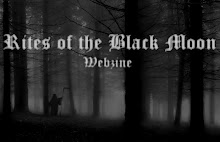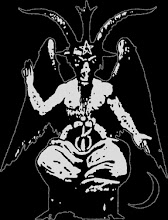
Satanic Warmaster began as one of the many side-projects of Horna vocalist Nazgul von Armageddon. He left the ranks of that band, following Sudentaival, due to being burned out and wanting to express his musical vision in a different manner (according to various sources). It would not be too surprising if these reasons were true, as his final album with Horna was not the high point of their collaboration and was, in fact, the worst record they ever released. Just about seven months later, in November 2001, the debut album from Satanic Warmaster was released by Mikko Aspa's Northern Heritage Records.
First and foremost, Strength and Honour is everything that Sudentaival was not. While the latter was over-produced and lacked a consistent atmosphere, the former was a return to the past in terms of the raw production and primitive songwriting. Musically, this sounds quite similar to the old Graveland material. The rough sound calls to mind recordings such as In the Glare of Burning Churches and The Celtic Winter. The roaring flames in the intro and the recurring keyboard use are elements that are shared between the two. This is emphasized by the drumming, which sometimes utilizes similar patterns, especially on "Raging Fires". However, most of the songs are much more straightforward and less frustrating for those listeners that simply wanted a bit more speed than Darken would ever allow for his compositions. There are still traces of the early Horna sound, though the influences seem to be a little different. Whereas Shatraug's arrangements frequently picked up from where Gorgoroth had left off, Nazgul's songs bear more similarities to Darkthrone and Moonblood, more often than not. The basic formula is rather minimalist, with a lot of gloomy tremolo riffs carried forward by high-speed percussion. The style does not deviate that much, from song to song, yet each track possesses enough variation to maintain the listener's interest, though it can be difficult to distinguish one from the next. There are times when the drum patterns become too catchy and evoke a punk vibe that does not blend well with the guitar melodies, but these indiscretions do not occur enough to ruin the whole album. The outro is a bit long and seems to serve no real purpose, other than to stretch the running time. Still, even if this was completely necessary, it may have been better to make it a separate track. Vocally, the sound is still very high-pitched and not far off from the work of Hat and Pest, on the early Gorgoroth records. It suits the raw sound of the music and the overall musical approach, but lacks any real sense of character and is rather average when compared to the more notable Black Metal vocalists of the past.
The most negative aspect of Strength and Honour is the production. Underground Black Metal is supposed to be raw, and this is no exception. In fact, the sound on this record is very much preferred over the horribly slick and soulless vibe of Horna's Sudentaival. That said, the drums are far too high in the mix, with the bass drum being particularly distracting. The songwriting is fairly generic and there is nothing here that had not been done much better a decade earlier; nonetheless, for those people that want to hear more of this style, a more guitar-oriented sound would have been beneficial. For the majority of the album, the riffs are nearly stomped out by the percussion, which is something that should always be avoided. The vocals are a bit too prominent as well, though the problem may actually be that they sound over-saturated in effects. The cheap microphone did not help matters, as certain puffs of air come through far too much and add to the unprofessional quality that permeates this L.P.
Strength and Honour is a fairly mediocre release, though it is actually one of the better albums to bear the Satanic Warmaster name, ranking just below Opferblut. There is nothing about this record that makes it essential for fans of Black Metal, as there were plenty of other bands doing the same style in a much more impressive manner, around the same time that this came out. It is doubtful that it even drew that much attention from fans of the early Horna material, that may have wondered what their ex-vocalist was up to, since Nazgul's style is not very distinguishable. If you do not demand a high level of quality from musicians, then this may be for you. Otherwise, you may want to stick with originators, while ignoring those that tried to emulate them.
First and foremost, Strength and Honour is everything that Sudentaival was not. While the latter was over-produced and lacked a consistent atmosphere, the former was a return to the past in terms of the raw production and primitive songwriting. Musically, this sounds quite similar to the old Graveland material. The rough sound calls to mind recordings such as In the Glare of Burning Churches and The Celtic Winter. The roaring flames in the intro and the recurring keyboard use are elements that are shared between the two. This is emphasized by the drumming, which sometimes utilizes similar patterns, especially on "Raging Fires". However, most of the songs are much more straightforward and less frustrating for those listeners that simply wanted a bit more speed than Darken would ever allow for his compositions. There are still traces of the early Horna sound, though the influences seem to be a little different. Whereas Shatraug's arrangements frequently picked up from where Gorgoroth had left off, Nazgul's songs bear more similarities to Darkthrone and Moonblood, more often than not. The basic formula is rather minimalist, with a lot of gloomy tremolo riffs carried forward by high-speed percussion. The style does not deviate that much, from song to song, yet each track possesses enough variation to maintain the listener's interest, though it can be difficult to distinguish one from the next. There are times when the drum patterns become too catchy and evoke a punk vibe that does not blend well with the guitar melodies, but these indiscretions do not occur enough to ruin the whole album. The outro is a bit long and seems to serve no real purpose, other than to stretch the running time. Still, even if this was completely necessary, it may have been better to make it a separate track. Vocally, the sound is still very high-pitched and not far off from the work of Hat and Pest, on the early Gorgoroth records. It suits the raw sound of the music and the overall musical approach, but lacks any real sense of character and is rather average when compared to the more notable Black Metal vocalists of the past.
The most negative aspect of Strength and Honour is the production. Underground Black Metal is supposed to be raw, and this is no exception. In fact, the sound on this record is very much preferred over the horribly slick and soulless vibe of Horna's Sudentaival. That said, the drums are far too high in the mix, with the bass drum being particularly distracting. The songwriting is fairly generic and there is nothing here that had not been done much better a decade earlier; nonetheless, for those people that want to hear more of this style, a more guitar-oriented sound would have been beneficial. For the majority of the album, the riffs are nearly stomped out by the percussion, which is something that should always be avoided. The vocals are a bit too prominent as well, though the problem may actually be that they sound over-saturated in effects. The cheap microphone did not help matters, as certain puffs of air come through far too much and add to the unprofessional quality that permeates this L.P.
Strength and Honour is a fairly mediocre release, though it is actually one of the better albums to bear the Satanic Warmaster name, ranking just below Opferblut. There is nothing about this record that makes it essential for fans of Black Metal, as there were plenty of other bands doing the same style in a much more impressive manner, around the same time that this came out. It is doubtful that it even drew that much attention from fans of the early Horna material, that may have wondered what their ex-vocalist was up to, since Nazgul's style is not very distinguishable. If you do not demand a high level of quality from musicians, then this may be for you. Otherwise, you may want to stick with originators, while ignoring those that tried to emulate them.
.jpg)


